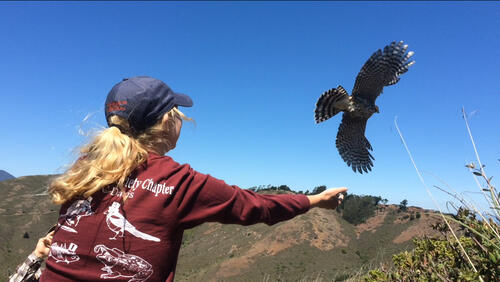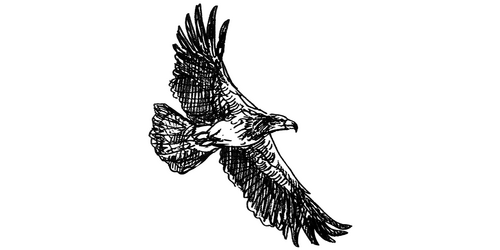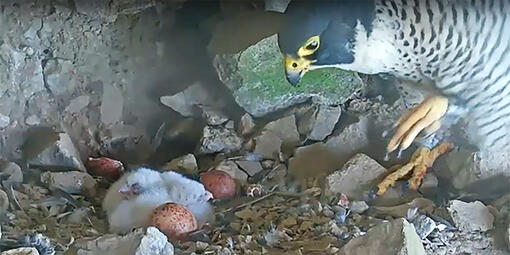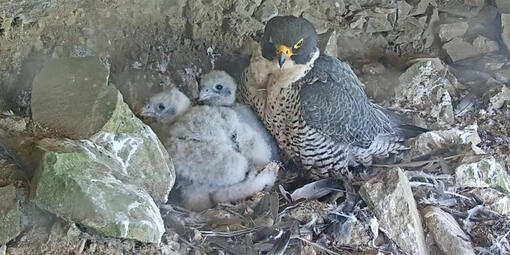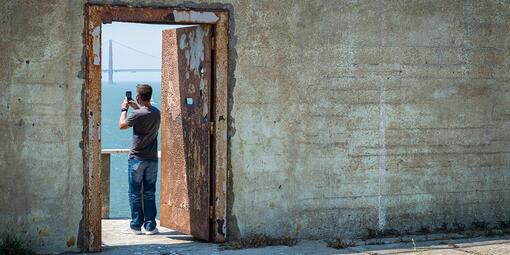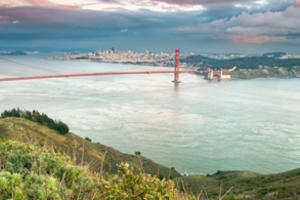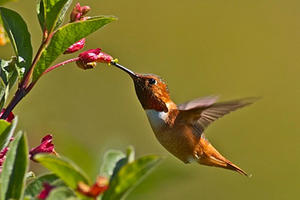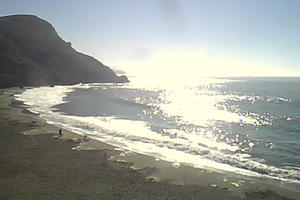In 2024, Peregrine Falcons nested again on Alcatraz Island! Watch the retrospective of their time on the Rock to see the fledgling family grow before your very eyes. Want to visit Alcatraz to see them for yourself? Check out National Park Service (NPS) Biologist Lidia D’amico's expert tips for safely viewing the nesting falcons.
Known as one of the fastest known birds in the world—and one of the fastest animals on Earth—these powerful birds of prey can dive at speeds of up to 200 mph. They also have a unique conservation success story.
By the 1970s, Peregrine Falcons were greatly reduced around the world because of the widespread use the pesticides, like DDT, after WWII, and even classified as Endangered in the U.S. and other countries. A thorough statewide California nesting survey in 1970 yielded only two Peregrine nests. After a quarter-century of Peregrine Falcon conservation efforts in North America and the Environmental Protection Agency bans on DDT in the U.S., Peregrine populations seemed to rebound by the late 1990s. The species was delisted from Endangered status in 1999. Today there are hundreds of nesting pairs of Peregrines in California alone.
The Peregrine Falcons on Alcatraz Island are a direct result of this tremendous conservation success. The female falcon, Lawrencium (aka Larry) was one of the 2018 chicks hatched on UC Berkeley’s Campanile by falcons Annie and Grinnell. Larry was identified on Alcatraz in 2020 by biologists who could see the bands placed on her legs when she was a chick. By 2020, Larry and her mate were producing their own young in a natural cave, called an “eyrie,” tucked away on the west side of the Island, and far from human activity. It was the first time Peregrines had ever been recorded nesting on Alcatraz.
Since 2023, NPS biologists have been monitoring Larry’s nesting on Alcatraz with the help of a small camera placed near her nest, called a “scrape.” In 2024, we've been able to set up the livestream camera to share this incredible view of a wild Peregrine Falcon nest with the world.
These are wild animals and the camera will show Peregrines bringing prey to the nest and feeding nestlings.
The camera is set up to provide visual monitoring of the ongoing nesting. NPS typically does not intervene in natural processes, like Peregrine nesting. Also, the camera nest location is not accessible. So NPS will not intervene at the nest even if there is video evidence of sick or injured birds or even siblicide.
The Parks Conservancy gratefully acknowledges the Helen and Will Webster Foundation for their generous support of the Peregrine Falcon webcam on Alcatraz.
